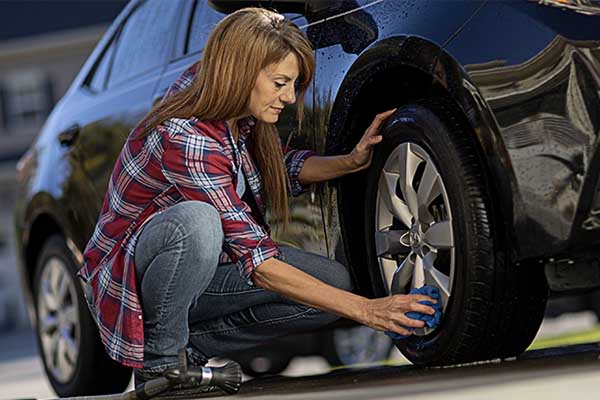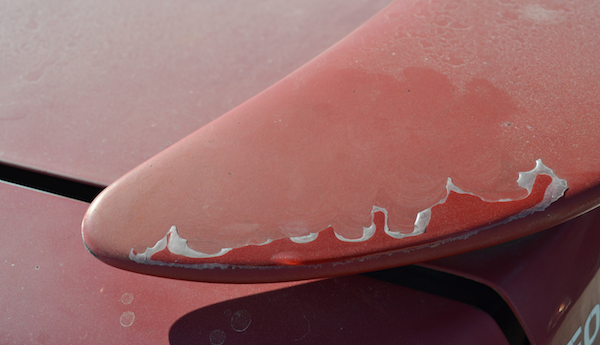One major reason why people buy classic cars is to get the chance to restore them to their former glory. Working on the mechanical parts usually takes center stage, which is no wonder, considering it's the most challenging and, consequently, the most rewarding aspect of a project of this kind. But no classic-car restoration project can be considered complete without a thorough restoration of the interior.

Source | Michael Held
This can be a tough job by itself, as the sun's UV rays and age take their toll on dashboards, upholstery, stitching, headliner, and carpets. It's a real challenge to match the original colors and fabrics of the interior and to repair vacuum systems, relays, wiring, and switches for power accessories.
To that end, we've got a few essential tips for completing a high-quality interior restoration.
Necessary tools
- safety glasses
- a dust mask
- cloths
- a vacuum
- a wrench set
- screwdrivers
- a welder (potentially)
- shears
- razor knife
First, make a list of items to be replace and items that can be repaired
Before you start doing any work on the interior, you need to do a thorough inspection to determine what requires replacement versus a few touch-ups. This will help you figure out how much time you'll need for this project and what it will cost you, so you don't have to deal with unexpected expenses along the way.
Older plastic compounds tended toward "plastic rot" and would degrade by fading, cracking, and becoming brittle after years of exposure to sun and heat. Items in the interior of older cars that tend to be damaged beyond salvation include parts of the dashboard and the wiring underneath it, as well as the upholstery, whereas things like the door panels and the seats themselves are usually well preserved and don't need to be replaced.
Start with the floor and the carpet
An optimal place to begin is with the floor. It can take a lot of time and effort to bring back in shape, and it's best if you get it done before you start repairing other parts of the interior. First, you need to assess the condition of the floor and check for potential damages, which could range from regular wear and tear that can be repaired with some sandblasting to one or more holes that would require patches. You'll have to remove the seats and the carpeting before your inspection and repairs.
Considering the age of classic cars, the rust damage in some areas will be so severe that it may have to be repaired by welding in new metal patches. Cars from coastal areas or northern states with harsh winters tend to be especially prone to floorboard and trunk rust. Worse yet, many cars from those parts of the country have frame rust—but we're presuming you've already checked for that, since severe frame rust can essentially render a car a total loss.
After taking care of the floor, the next step is to install a new carpet. But before that, we recommend installing under-carpet padding, which helps reduce noise levels and heat inside the cabin. Dynamat is a newer product that's designed specifically for this purpose and can provide an amazing amount of noise suppression. Then attach the new carpet, trimming it carefully and precisely so that it fits perfectly with the car's floor. Remember the carpenter's adage to "measure twice, cut once," as this is an absolutely crucial step in the process.
Continue with the seats, door panels and headliner
When replacing the upholstery on the seats of a classic car, you'll have to decide which materials to use. If you're aiming for authenticity, take into account the original upholstery, which is likely to be either vinyl, leather, suede, velvet, some type of textile, or a combination of those.
As far as the door panels and the headliner are concerned, you will need to decide if they are too worn and need to be replaced or can just be cleaned up refreshed. In case they are severely damaged, you'll be able to replace them easily. You can use a screwdriver and pry tools to remove the door panels and attach the new ones. Be careful, as the plastic connectors for the door panels tend to get brittle with age, as does the plastic for window or lock linkages.
When it comes to the headliner, you just need to make sure the surface of the ceiling is as clean and as smooth as possible after you remove the old headliner, and use a strong and high-quality adhesive when attaching the new one, so that it stays glued to the headliner board as long as possible.
The good news is that for Ford, Chrysler, and GM restorations, exact matches of upholstery and headliner fabrics aren't too hard to find. For a restoration of a more obscure make, such as a Studebaker, Packard, Hudson, etc., you may have to get a little more creative or just settle for something that's close to the original without being an exact match.
Restore the dashboard to finish the project
Finally, it's time to work on the dashboard. For starters, you should determine whether the surface of the dashboard is well preserved or has too many scratches, cracks, or other severe damage and should be replaced. Then, take it apart and inspect the wiring behind it. If the cables are worn out, you should definitely consider replacing them, as well.
Older-model Buicks, Cadillacs, Lincolns, and other luxury makes often relied on vacuums to run accessories like power door locks and even power windows, with much of the vacuum lines, canisters, and amplifiers placed behind or under the dash. Vacuum lines tend to dry-rot and can be a real headache to restore. If this is the case on your vehicle, find a good vacuum schematic that shows the proper routing.
If the dashboard has to be replaced, you can try to find an authentic one online or at a local car-parts shop. In case it's in good condition and still usable, you could just clean it up thoroughly. To do that, use a microfiber towel to remove all the dust from the gauges and the radio, and a few car-cleaning wipes for the rest of the dash and the steering wheel.
It's all about authenticity
Restoring a classic car's interior can certainly be a daunting, time-consuming, and potentially expensive project, but it's an inescapable part of preserving the car's overall authenticity. The main thing to keep in mind when taking on a DIY project like this is that there's no need to rush it. Instead, take your time and complete each task at the pace you're comfortable with and that will not put your household budget under an enormous strain, while using authentic parts and materials that will reflect the car's original interior look and feel as much as possible.
Have you ever restored a classic car's interior or thought about doing it at some point? Share your thoughts in the comments below.








